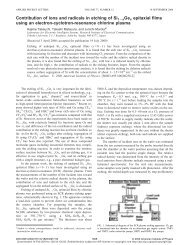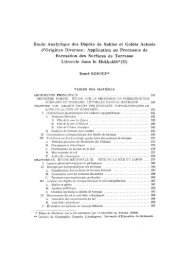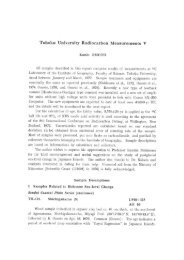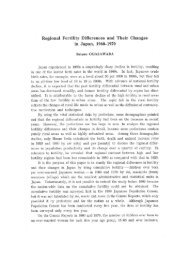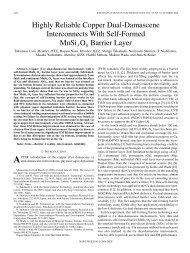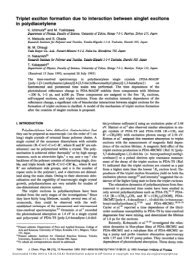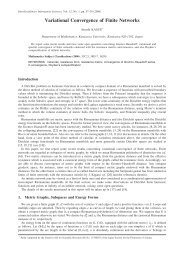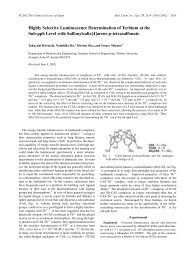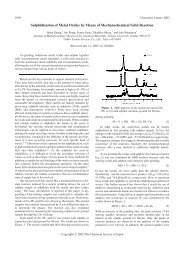MgE71241:1attf:3(t At-- 0 -3 5t5M I:. N1144±TitoD riziMinliJ VAT .9f 1 ...
MgE71241:1attf:3(t At-- 0 -3 5t5M I:. N1144±TitoD riziMinliJ VAT .9f 1 ...
MgE71241:1attf:3(t At-- 0 -3 5t5M I:. N1144±TitoD riziMinliJ VAT .9f 1 ...
Create successful ePaper yourself
Turn your PDF publications into a flip-book with our unique Google optimized e-Paper software.
2 1. INTRODUCTION<br />
300-500 km<br />
Dnvecti o n- driv e)<br />
aurora<br />
ion drag 1 I<br />
aurora ora<br />
80-90 km<br />
precipitation<br />
i f t wind ?<br />
I I 1I /<br />
(Joule 17 I it heating) I II 1 7.ndr) wic<br />
thermal expansion —*<br />
large-scale atmospheric<br />
gravity wave (ex.TID) EUV/UV heating<br />
breaking wind ?<br />
gravity wave<br />
pressure gradient<br />
'"<br />
,---'•-r--...<br />
OM0Elves<br />
vY Sprites<br />
equatorial<br />
anomaly<br />
Earth<br />
high low<br />
latitude latitude<br />
Figure 1.1. Scheme of thermospheric phenomena and physical processes<br />
models. It is well known that thermospheric densities and temperatures vary with solar<br />
activity and that such variations follow those of solar decimetric (F10.7) flux. This radio<br />
flux, which has been catalogued continuously over many years, does not act directly on the<br />
upper atmosphere itself, but correlates with the experimental data sets of thermospheric<br />
temperatures [Hernandez, 1983].<br />
The second important energy sources for the thermosphere is solar wind energy injected<br />
primarily through auroral processes. Auroral energy often exceeds the energy due to so-<br />
lar EUV/UV radiation during geomagnetic storms or substorms. Further, auroral activity<br />
changes so quickly that thermospheric temperature and wind at high-latitude change mo-<br />
mentarily. Consequently a study of thermospheric response to auroral activity is essential for<br />
the investigation of dynamical processes of the thermosphere. The auroral energy heats the<br />
thermosphere through Joule heating and the collisional slowing-down process of energetic<br />
particles precipitating from the magnetosphere. The rate of Joule and particle heating can<br />
be estimated from ionospheric parameters. Foster et al. [1983] calculated the Joule heating






